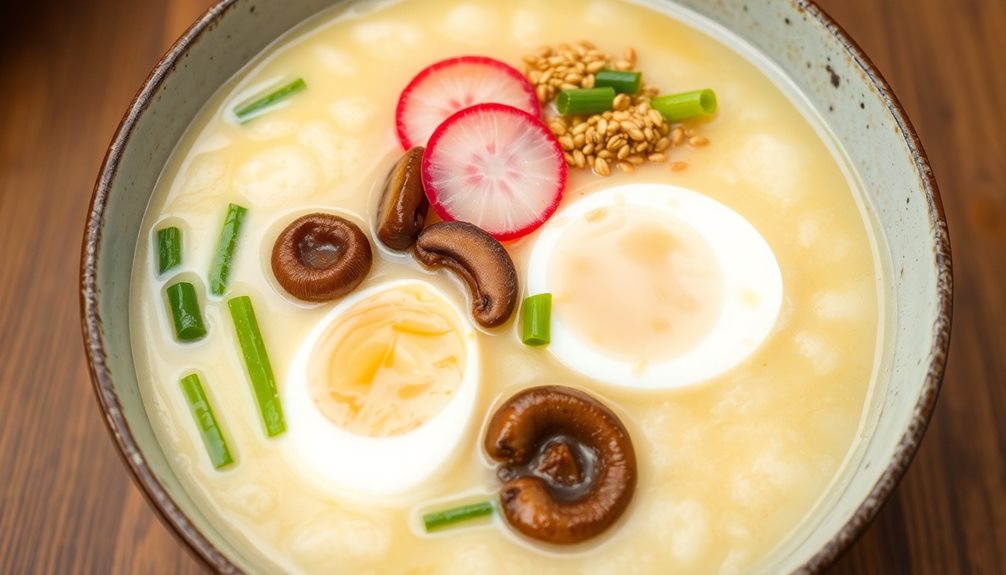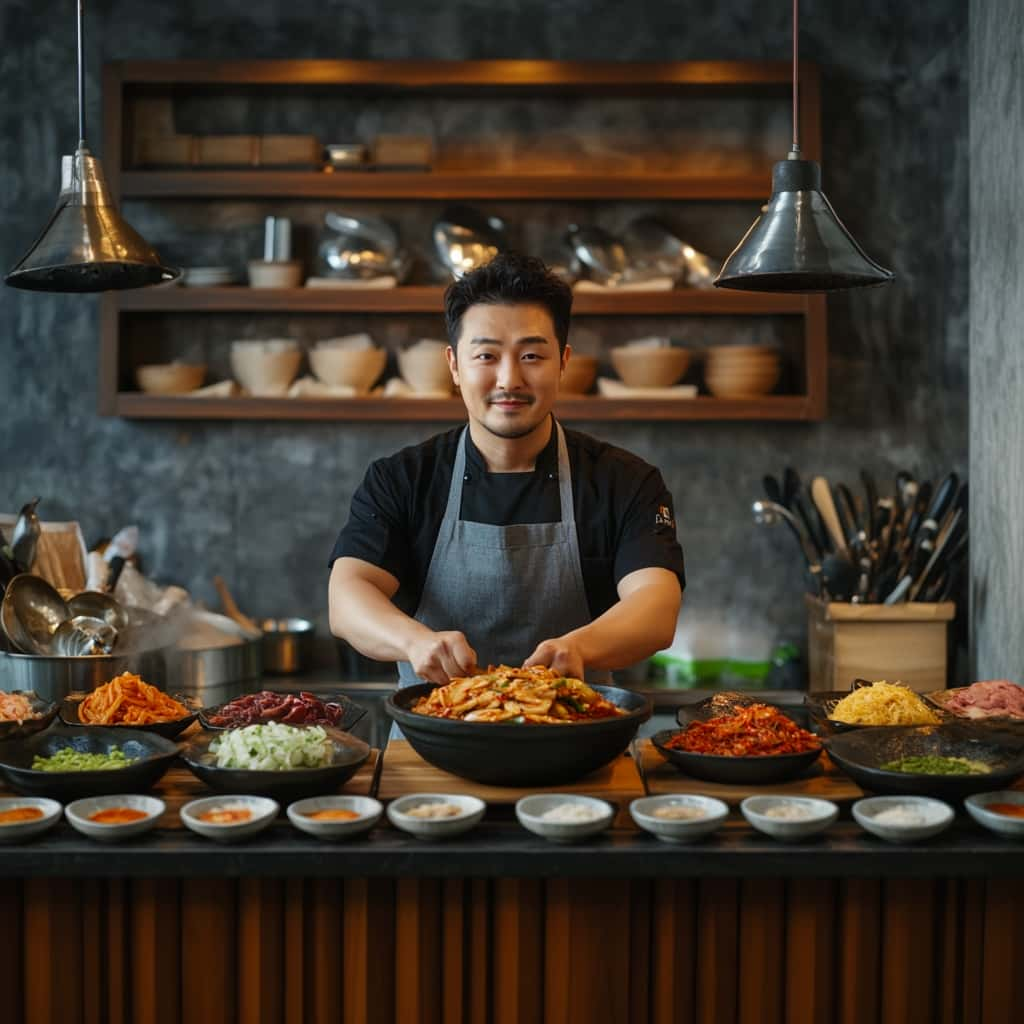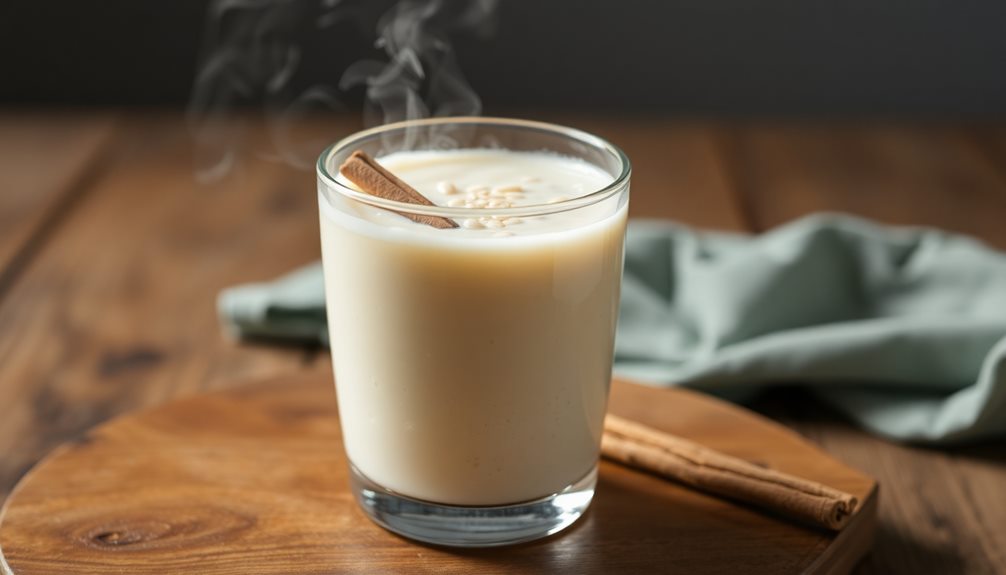Korean porridge, known as juk, is a beloved comfort food that'll warm your heart and soul. Start by rinsing the rice thoroughly to get that perfect creamy texture. Then, add some savory dried shiitake mushrooms and chopped spring onions for mouthwatering flavor. Simmer it all until it's wonderfully smooth, and don't forget to top it off with toasted sesame seeds for a delightful crunch. This timeless dish is not only nourishing, but it's also a cherished part of Korean culture, passed down through generations. If you'd like to learn more about the rich history and tradition behind this comforting meal, keep reading!
Key Takeaways
- Korean porridge, known as juk, has a rich history dating back thousands of years and is considered a beloved comfort food in Korean cuisine.
- The base ingredients for Korean porridge include short-grain rice, water or broth, and salt, with various optional toppings and additional ingredients to enhance flavor and nutrition.
- Proper rinsing of the rice, addition of soaked dried shiitake mushrooms, and incorporation of chopped spring onions are crucial steps in the cooking process.
- Simmering the porridge until it reaches the desired creamy and velvety consistency is essential, with the option to adjust the consistency with water as needed.
- Garnishing the finished porridge with toasted sesame seeds adds a delightful crunchy and nutty contrast to the soft and comforting texture of the dish.
History
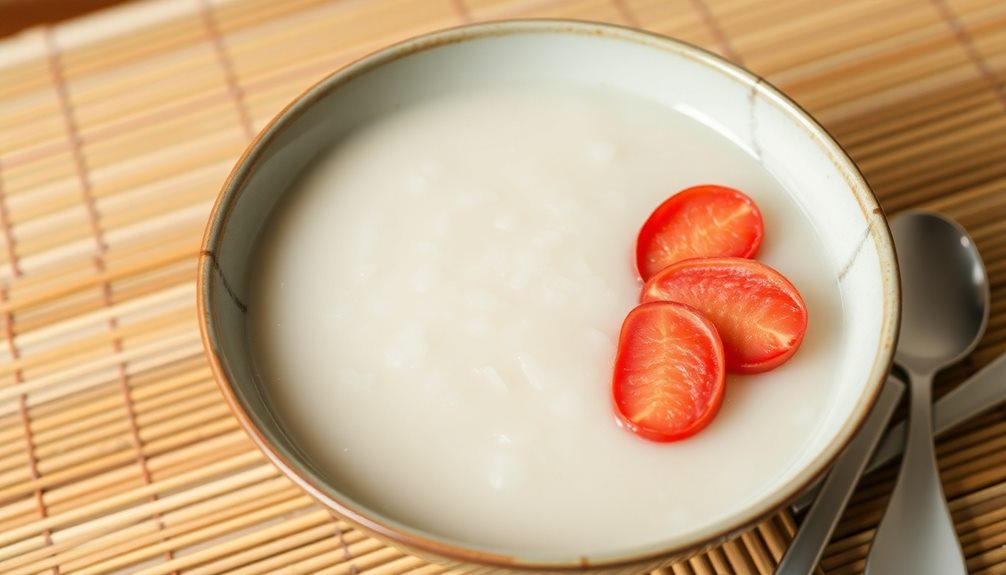
Did you know that Korean porridge, known as juk, has a rich history dating back thousands of years? This comforting dish has been a staple in Korean cuisine for centuries, with its origins tracing back to the ancient kingdoms of the Korean peninsula.
Juk was initially enjoyed by the noble classes, who saw it as a delicate and elegant food. Over time, it became more widely accessible, and different variations emerged, each region developing its own unique style and ingredients.
From the savory beef and vegetable juk to the sweet, fragrant rice porridge, juk has always been a beloved comfort food, soothing the soul and nourishing the body.
Today, juk remains a cherished part of Korean culinary heritage, with families passing down their cherished recipes through generations.
Whether it's a simple breakfast or a special occasion dish, the timeless appeal of this humble porridge continues to bring joy and warmth to people across Korea and beyond.
Cooking Steps

To begin the cooking process, gather all the necessary ingredients and equipment. You'll need a large pot, a ladle, and the key components: short-grain rice, water, salt, and any desired mix-ins like meat, vegetables, or seasoning.
Start by rinsing the rice until the water runs clear. Then, add the rice and an equal amount of water to your pot. Bringing the mixture to a boil over high heat creates a strong foundation for your dish, much like setting clear intentions is essential in the Law of Attraction principles.
Once boiling, reduce the heat to low, cover the pot, and let the porridge simmer for about 30 minutes, stirring occasionally. The rice will break down, creating a creamy, comforting texture. If the porridge becomes too thick, add more water to reach your desired consistency. Season with salt to taste.
Step 1. Rinse Rice Thoroughly Before Cooking
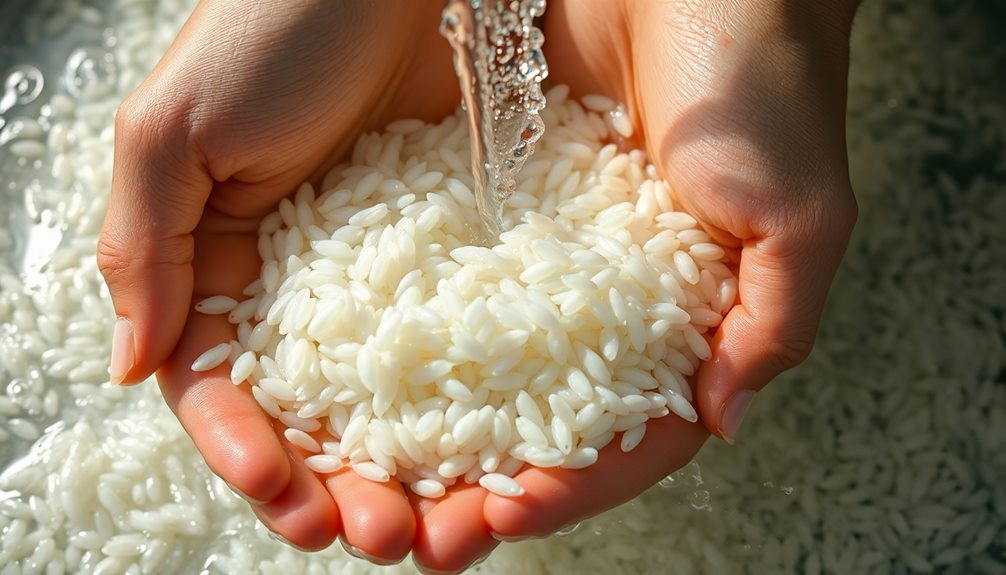
Rinsing the rice thoroughly before cooking is a crucial step in preparing authentic Korean porridge. This simple step helps remove excess starch, resulting in a creamier, more luscious texture.
To rinse the rice, simply place it in a fine-mesh strainer and run it under cool, clean water, gently stirring and swishing the grains with your hand. You'll see the water turn cloudy as the starch is released. Continue rinsing until the water runs clear, usually about 2-3 minutes.
Once rinsed, transfer the rice to your pot and add the appropriate amount of water. This thorough rinsing helps the grains cook evenly, ensuring a smooth, velvety porridge.
It's a small step that makes a big difference in the final dish. Trust us, your taste buds will thank you! With this simple technique, you're well on your way to creating a comforting Korean porridge that will warm you from the inside out.
Step 2. Add Soaked Dried Shiitake Mushrooms
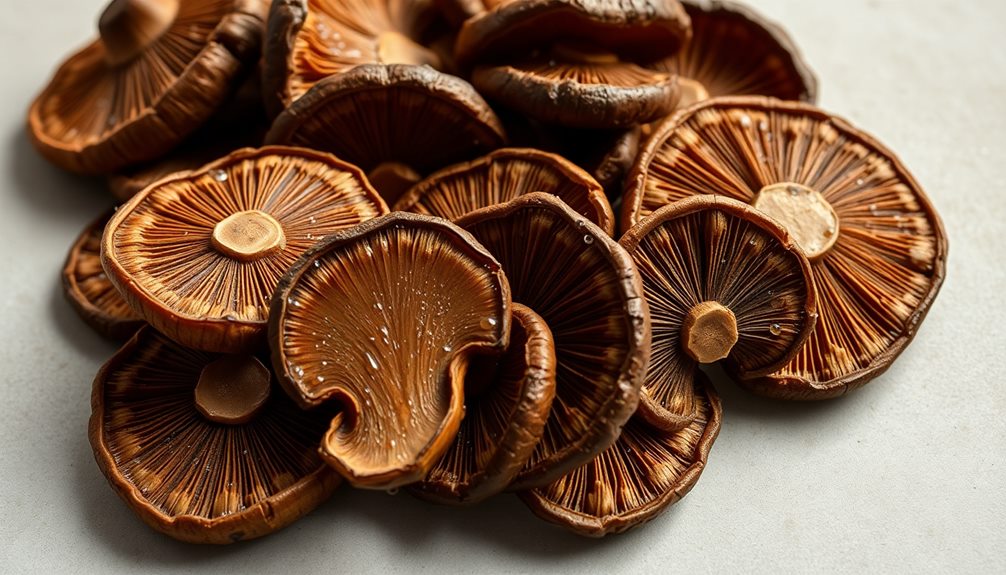
After rinsing the rice, it's time to incorporate the soaked dried shiitake mushrooms. These Japanese mushrooms add an earthy, umami-rich flavor that perfectly complements the rice.
Simply drain the mushrooms, reserving the soaking liquid for later. Slice the mushrooms into bite-sized pieces and toss them into the pot with the rinsed rice. The mushrooms will release their savory goodness as the porridge simmers, infusing every spoonful with deep, complex flavors.
Don't be afraid to use a generous amount of mushrooms – their distinctive taste is a key component of authentic Korean porridge. As the porridge cooks, the mushrooms will soften and blend seamlessly into the creamy texture.
Remember to keep an eye on the pot, stirring occasionally to prevent sticking or burning. With the mushrooms now incorporated, you're well on your way to creating a comforting and delicious Korean porridge masterpiece.
Step 3. Add Chopped Spring Onions

Next, go ahead and toss in the chopped spring onions. These fresh and vibrant greens will add a lovely pop of color and a delightful onion-y flavor to your porridge.
Just grab a handful of spring onions, give them a good rinse, and then chop them up into small pieces. Sprinkle them right on top of the simmering porridge, and watch as they dance and sizzle in the hot broth.
The spring onions will lend a nice crunch and a subtle sweetness that complements the other savory ingredients perfectly. As you enjoy this comforting dish, consider how the soothing aroma of the spring onions can enhance your mood and comfort—aromatherapy benefits can truly elevate any meal experience.
Be sure to stir them in gently so they're evenly distributed throughout the dish. The combination of the soft, creamy porridge and the fresh, vibrant spring onions is truly a match made in heaven.
Get ready to enjoy a comforting and nourishing bowl of Korean porridge, elevated by the addition of these aromatic greens.
Step 4. Simmer Until Desired Consistency
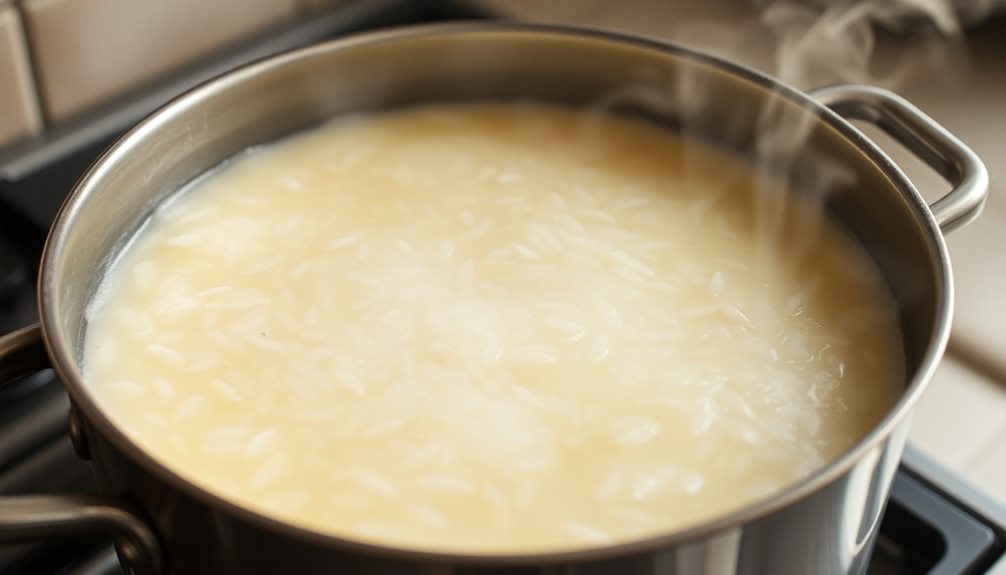
Now that the spring onions have been added, it's time to simmer the porridge until it reaches your desired consistency.
You'll want to keep a close eye on the pot, gently stirring the porridge every few minutes. As the grains slowly release their starch, the porridge will thicken up nicely.
Don't be afraid to let it simmer for a bit longer if you prefer a creamier texture. The longer it simmers, the more the flavors will meld together. Just be patient and keep an eye on the consistency, adding a splash of water if it gets too thick.
Once it reaches the perfect velvety smoothness you're going for, it's ready to serve. Ladle the comforting porridge into bowls and get ready to savor every bite.
The aroma of the simmering porridge will have your mouth watering in anticipation. Now, let's dive in and enjoy this cozy Korean classic!
Step 5. Garnish With Toasted Sesame Seeds

The final touch to this comforting Korean porridge is a sprinkle of toasted sesame seeds. These little seeds pack a punch of nutty, rich flavor that perfectly complements the savory and soothing broth.
To prepare the garnish, simply toast the sesame seeds in a dry skillet over medium heat. Keep a close eye on them, stirring frequently, until they start to turn golden brown and release their aroma. Be careful not to let them burn, as that would ruin the flavor.
Once the sesame seeds are toasted to perfection, remove them from the heat and let them cool slightly. Then, take a generous pinch and sprinkle them over the top of your steaming hot bowl of porridge.
The contrast of the crispy, nutty seeds against the creamy, comforting porridge is simply divine. Not only do the toasted sesame seeds add incredible flavor, but they also provide a lovely visual appeal, making your homemade Korean porridge even more appetizing.
Enjoy this final flourish and savor every bite of your delicious creation.
Final Thoughts
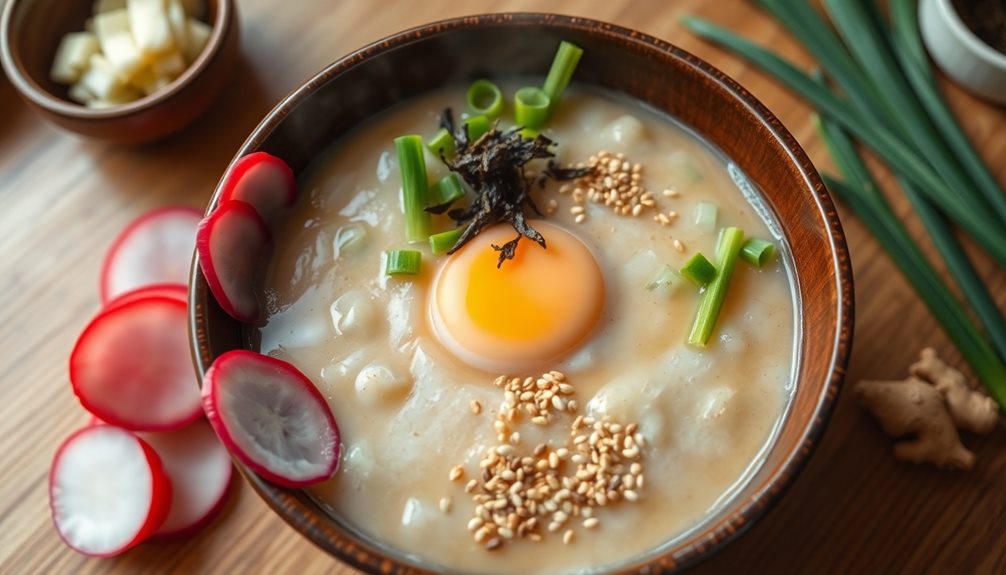
When you've finished preparing the Korean porridge, take a moment to savor the comforting aroma and the satisfying texture. The soft, velvety grains will warm your soul, and the garnishes you've carefully chosen will add delightful pops of flavor and texture.
Whether you're enjoying it on a chilly day or seeking a soothing meal, this Korean porridge is sure to become a cherished part of your culinary repertoire. Additionally, you might consider incorporating some antioxidant-rich ingredients, making it a nutritious option that supports overall health and well-being, such as nutritional benefits from various vegetables.
The versatility of this dish is truly remarkable. Customize it to your liking by experimenting with different toppings, from savory to sweet. Try adding a drizzle of soy sauce, a sprinkle of toasted sesame seeds, or a spoonful of kimchi for an authentic Korean touch.
The possibilities are endless, allowing you to create a porridge that perfectly suits your taste buds. As you savor every bite, take pride in the fact that you've mastered a traditional Korean comfort food.
This dish isn't only delicious but also a testament to the rich culinary traditions of Korea. Enjoy your creation, and may it bring you the same sense of comfort and joy that it has brought to generations before you.
Frequently Asked Questions
What Is the Best Type of Rice to Use for Korean Porridge?
For the best Korean porridge, you'll want to use short-grain rice. It's starchier than long-grain varieties, which helps create the creamy, comforting texture you're looking for in your homemade Korean-style rice porridge.
How Can I Make the Porridge More Flavorful?
To make your Korean porridge more flavorful, try adding soy sauce, ginger, garlic, or scallions. You can also top it with savory toppings like sautéed mushrooms, shredded chicken, or a soft-boiled egg for extra flavor and texture.
How Long Can Leftover Porridge Be Stored?
Leftover porridge can be stored in the fridge for up to 3-4 days. Simply reheat it on the stovetop or in the microwave when you're ready to enjoy it again. The flavors will hold up well during storage.
Can I Use Other Proteins Besides Chicken or Beef?
Absolutely! You can use a variety of proteins besides chicken or beef in your Korean porridge. Try shrimp, pork, or even tofu for a vegetarian option. Experiment with different flavors to find your perfect combination.
Is Korean Porridge Gluten-Free?
Yes, Korean porridge is typically gluten-free. The main ingredients, such as rice, vegetables, and proteins, don't contain gluten. Just be sure to check the specific recipe and any additional ingredients to ensure it's suitable for a gluten-free diet.
